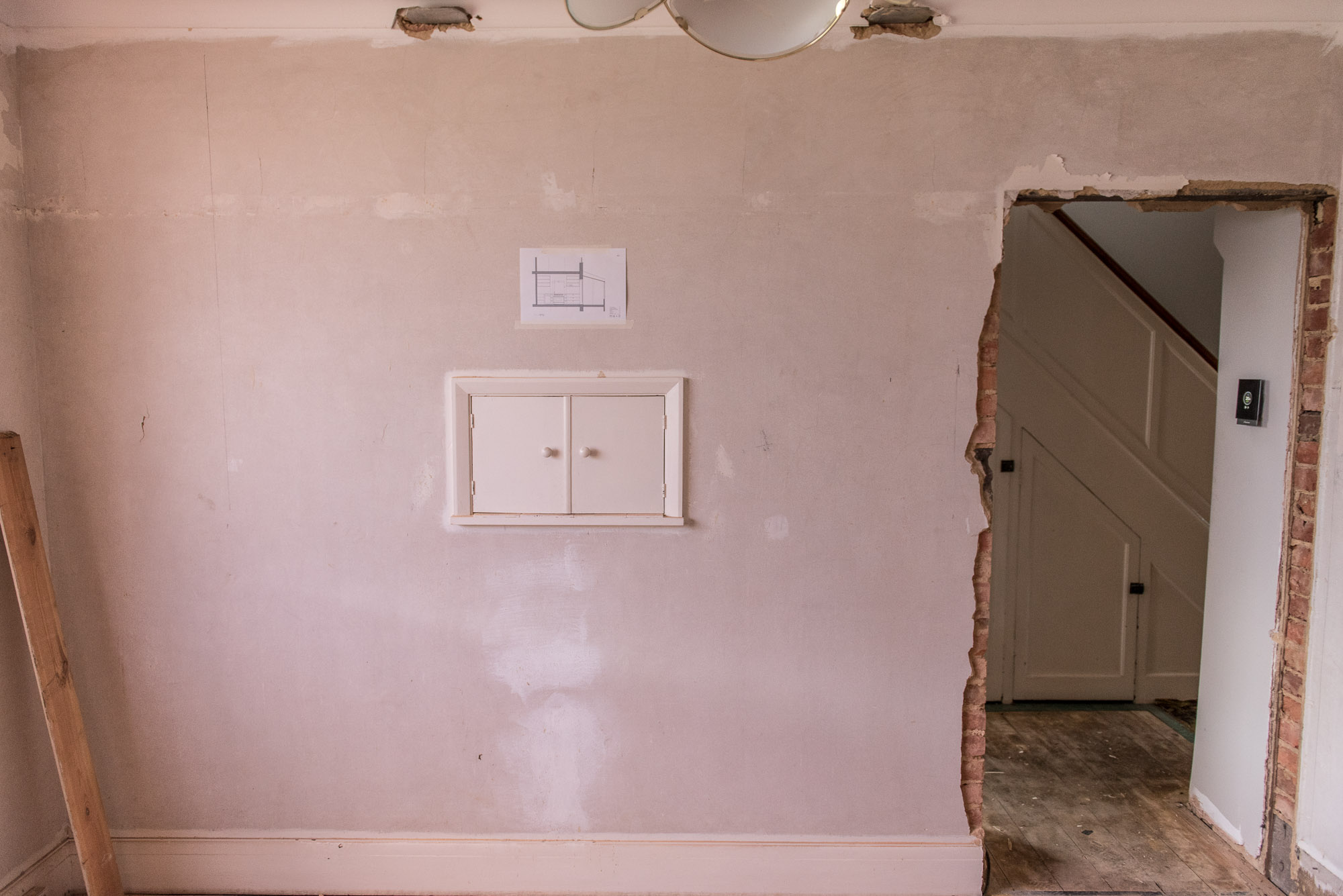
The Ultimate Guide to Planning Permission
Feeling a little baffled when it comes to your planning permission rights? Read our guide to understand what planning permission is, when you need it, how much it costs, how to make an application and much more…
If you’re planning a home renovation of any substantial size, building work will most likely be part of your plans.
Whether you’re looking at extending what you have, making a big alteration or even starting from scratch, it’s tricky trying to understanding if you’ll need planning permission under the government changes in 2020. Many of the projects that used to require planning permission are now allowed without it, but making assumptions can be a super risky mistake.
Those two words tend to conjure up painful images of paperwork and long waits (we’ve all heard the horror stories!), but it’s a crucial part of a renovation and failing to get planning permission can result in unpleasant consequences.
Take it from us, planning permission really isn’t as bad as it’s reputation makes out :) So we’re here to demystify the mumbo jumbo and help you to understand the ins and outs of what your planning permission rights are, whether you need it (or not) and how to get it.
Your planning adventure will be a doddle!
Psst! If you want a helping hand through your renovation, take a look at the online course we offer called How to Renovate a House. It will guide you through the planning and decision making process and is made for renovation newbies.
Click to jump to the section you need, or scroll to read…
1. What is planning permission?
2. Do I need planning permission?
3. When don’t I need permission?
4. Do I have to own the land or property I apply for?
5. How do I make an application?
6. What do I need to make an application?
7. How much does it cost?
8. How long does planning permission last?
9. Do I need a planning consultant?
10. How is a decision made?
11. How long does it take to get permission?
12. What if the neighbours object?
13. What happens if I build without permission?
14. I’ve got more questions. Who can I ask?
What is planning permission?
To put it simply, planning permission is a formal go-ahead from your Local Planning Authority to say you are (or aren’t) allowed to do certain building or improvement work to your property or home. The government has recently made some major changes to planning permission rules (effective September 2020) so it’s important to get to grips with what’s new. Luckily, it’s easier and faster to go through the planning permission process under these new changes so read on to find out how you can make the most of you home.
Do I need planning permission?
This depends on the kind of work you want to do. Under the new changes, land will fall into one of three categories, being growth, renewal or protected. If you fall under ‘growth’ then you get automatic planning permission which your local authority cannot veto. If you’re in the ‘renewal’ grouping then you’re a little more restricted but developments are allowed and it’ll be far more restricted under the ‘protected’ category. However, these are pretty broad groups so if your plans don’t fit neatly into a group, it’s definitely work checking with your Local Planning Authority (LPA). Also, listed buildings, flats, maisonettes and some new developments are excluded from the newly expanded permitted development rights and so will still need planning permission. Homes in conservation areas are also restricted but not excluded from permitted developments. With that in mind, if you’re planning something minor and assume it’s too small to need permission for, best check before you go ahead and start, just in case you do. A simple google search to locate your local LPA should get you on the right track.
When don’t I need permission?
Building works that fall under the category of ‘permitted development rights’ will not need planning permission prior to commencement. That means that under the new rules, you won’t need full planning permission to demolish and rebuild existing buildings which are unused in order to make a home. Luckily, there’s lots more freedom to extend too, so you’ll be able to add up to two storeys to make a new home or extend your current space in a fast tracked approval process. However, this is only applicable to properties built between 1948 and 2018 as well as homes in conversation areas and must be done in line with considering the impact on neighbours and how the extension will make an impact visually. You’ll also be able to convert some commercial premises into homes without planning permission, so things like officers, cafes or shops.
The following also generally falls under permitted developments and will not need planning permission:
a two storey rear extension (no longer than three metres back and at least seven metres from the end of your garden)
a side extension (single storey and looking similar to the original property materials, no more than half the width of the original house)
a side return extension (up to four metres and no more than half the width of the original house)
a loft extension (no larger than 40 cubic metres for terraced houses or 50 cubic metres for detached/semi-detached
a front porch
a swimming pools and hot tubs (so long as they can’t be seen from the front of the property and don’t account for more than half the rear garden)
any cosmetic interior alterations
As always, it’s best to err on the side of caution and make sure your project is safely within permitted development rights so don’t be afraid to contact your local planning authority to double check.
Do I have to own the land or property I apply for?
In short, no. You absolutely don’t need to own whatever it is you’re applying for. If you’re looking at purchasing a property but would want to do some major work, it’s a smart idea to get permission first, before your sale goes through otherwise you may end up with big building dreams that can’t be fulfilled. The cost of getting permission will be far less than buying property you can’t carry out work on, and you’ll be ahead of the game when you do eventually get the keys.
How do I make an application?
Luckily, the internet makes this one far easier than it has been in the past. You can make an application to any local authority in England online through the Planning Portal with fairly straight forward forms, so long as you’ve got your plans to hand. You need to make an account for each type of application but it streamlines the process so it’s more manageable for you. Just gather your information and click through the stages.
What do I need to make an application?
When you’re making your application, there are two categories of supporting documents that you’ll need to submit called ‘national’ and ‘local’. If you’re doing the planning application online, the online service will tell you what you need. Under the ‘national’ category, you’ll need to submit the following:
the completed application form
a location plan (showing the site and surrounding areas) and a site plan (showing the proposed development)
an ownership certificate stating who owns the property
an agricultural holdings certificate (whether the site includes agricultural holdings or not)
A design and access statement showing the design ideas and access considerations (although this may not be required in some cases)
the correct fee (see below)
On top of these, your local authority might also require other documents but these will be stated on the list on screen during the application process.
It’s also smart to attach any supporting bits which you think might help your application. If you struggle to attach your documents, you might be able to give them a hard copy instead.
How much does it cost?
There’s no single fee for a planning permission application as costs vary depending on what you are applying for so again, there’s categories to figure out how much your application will be. It’s currently £462 if you’re applying for detailed full planning permission on a new home or conversion (that’s when you’ve got your exact plan ready to go). If you’re making an outline application (i.e proposing an idea, not a specific plan), it’s £462 per 0.1 hectares you’re applying about. If you’re just after an application for an extension or garden building (known as a householder application), it’ll cost £206. However, if you’re granted permission subject to conditions then you’ll also need to pay £116 to approve any details or £34 for householder applications. Be careful, most applications don’t just incur these costs as others come into play such as council charges and the Community Infrastructure Levy (CIL). These costs are accurate as of July 2019. (You can read our full post on this here: How much does planning permission cost)
How long does planning permission last?
If permission is granted (fingers crossed), the amount of time you have to start the work you’ve proposed to complete will change between applications. If it isn’t stated, the usual is three years. If you miss this time limit, you’ll need to apply again. If there are conditions granted with your permission, you’ll need to resolve these before you can commence. Also, if you’re looking to buy or sell the land the application has been granted for, the permission will run with the land unless there’s a condition stating otherwise. (You can read our full post on this here: How long does planning permission last)
Do I need a planning consultant?
This is a tricky one as really it’s down to your situation and preference. But we feel that unless your renovation job is a tricky one with big old complicated plans, then you’re usually fine to take it on yourself. Much the same as with your renovation plans, really. After all, that’s what this guide is for. If you’ve got a basic understanding of what you’re doing, how to do it and and where to start, then go right ahead and walk yourself through the steps. If not, it might be worth looking at the Royal Town Planning Institute to find a local consultant from their trusted directory. Again, being honest with yourself about your plans can save a lot of stress and money. If you do decide to go with a consultant, ask them what the chances are of the application being approved, discuss any potential site issues and whether there may be any conditions for issues such as noise or traffic.
How is a decision made?
Ultimately, the decision to approve your application (or in some cases, not) is made by your Local Planning Authority. The LPA will base the decision on the development plan, not on local opinion. When making the decision, they look at the following criteria:
• the number, size, layout, location and appearance of what you’re working on
• the infrastructure available, eg. roads and water supply
• any landscaping needs involved in your plan
• what you intend to use the development or changes for
• how your development or changes would affect the surrounding area and neighbourhood
How long does it take to get your permission through?
In most cases in England, a decision is usually made within 8 weeks. However some more complex or large-scale cases may take up 13 weeks. If your case takes longer than this, you can appeal it on the Gov.uk website. An appeal may take several months to be decided so it’s best not to set any dates until you get the permission you need. Under the new system, buildings that fall under ‘beautiful’, meaning they reflect the local character and style, will be fast-tracked. If the project falls in line with local design codes, you’ll be guaranteed quicker planning permission. All in all, projects must go through the system in 30 months or the LPA will get in trouble but this is more applicable to big developments that currently take up to 7 years to process.
What if the neighbours object?
Generally, we think it’s a good idea to stay on side with neighbours for all sorts of reasons, but sometimes they just don’t agree with what you want to do. If you make your application and your neighbours decide to object to it, your relationship with them might be damaged but don’t fret, it probably may well have no effect on the outcome of the application. It can be worth running plans past current or potential neighbours before you do any work as being stuck in arguments and unnecessary tension over work they weren’t aware of can make your neighbourhood an unhappy place to live.
What happens if I build without permission?
We’ve all heard the horror stories of eager homemakers going against one’s better judgement and ploughing ahead on big renovation work without planning permission. In some (very rare) cases, they get away with a hugely risky decision. But most of the time it proves to be a silly mistake. If it’s discovered that you don’t have planning permission for the project, you can be served an ‘enforcement notice’ asking you to undo all the work. Ultimately, this will be far more expensive in time and money than getting permission to start with. It’s actually illegal to go against the enforcement notice but you can also appeal it.
I’ve got more questions. Who can I ask?
For any and all unusual or property-specific questions that we haven’t covered in this guide, contact your local council. Again, you can search for contact details on the Planning Portal site. If you’re a first-timer with great home renovation plans, why not sign up for our How to Renovate a House online course to help you through the process and budget each and every renovation cost effectively.
We hope this guide helps you on your renovation journey. Please do take a look at the rest of our blog for more renovation tips, or if you feel you need a little more support, check out our tools and resources for people new to renovating.
Thanks for reading!
Fifi & Neil xoxo
Please note: information is correct as of November 2020. Be sure to check for changes if applying after this date. We’ve also created this guide in line with English guidelines so again, please double check if you’re in other parts of the world.






